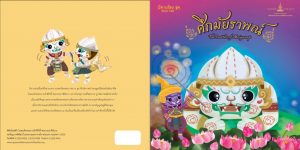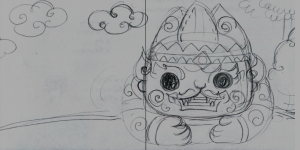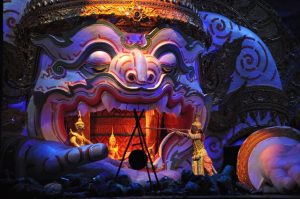Share
The Making of “The Battle of Maiyarap: A Story from the Ramakien” Children Book

“The Battle of Maiyarap: A Story from the Ramakien” children book’s main purpose is to enhance knowledge on Thai literature for children. The author chooses Ramakien for the book since it is the literature that shows the love and loyalty to the King and benefactor as well as showing the harmony of people as a nation. Moreover, the book is related to Queen Sirikit Museum of Textiles’ exhibition during 2015-2016, “Dressing Gods & Demons: Costume for Khon”. The whole process of making this book was 6 months and each steps were done carefully as follow:
First step, choosing the episode:
Since Ramakien is an adaptation of Indian literature, “Ramayana” with the long storyline and delicate language; it is difficult for young children to enjoy. Therefore, the author has chosen only one episode and made it simpler for children to understand. The Battle of Maiyarap is chosen due to its main character, Hanuman. Hanuman represents self-sacrifice and great loyalty to the king which is Phra Ram. Also, the story is about how Hanuman fights through many struggles with his intelligence and efforts, in order to save his King. As a result, this episode is full of excitement and creativity that young children can learn and enjoy.
Second step, research and improving the script:
Fortunately, the author received the help from Royal Khon Performance’s actor team with the Ramakien script from 2007 Royal Khon Performance. The author re-writes the language into the simpler one for the target group. The story has also been translated into English and verified by the Royal Khon Performance committee.
Third step, design for the target group:
A design is the next significant step. The author has to do research on images and drawings that are both appropriate for children and literature. Then, the publisher develops the drawings into the newly colorful watercolor cartoon.
Fourth step, correction:
The book is carefully checked by the professionals for the correction in both literacy and design by editor and publisher. In this case, if there are any changes, an approval from the museum’s director is required.
Last step, publishing and after:
Finally, after the six months of process, the book is published. It was not only on sale at QSMT Shop. The books were sent to school’s libraries with the free of charge.

